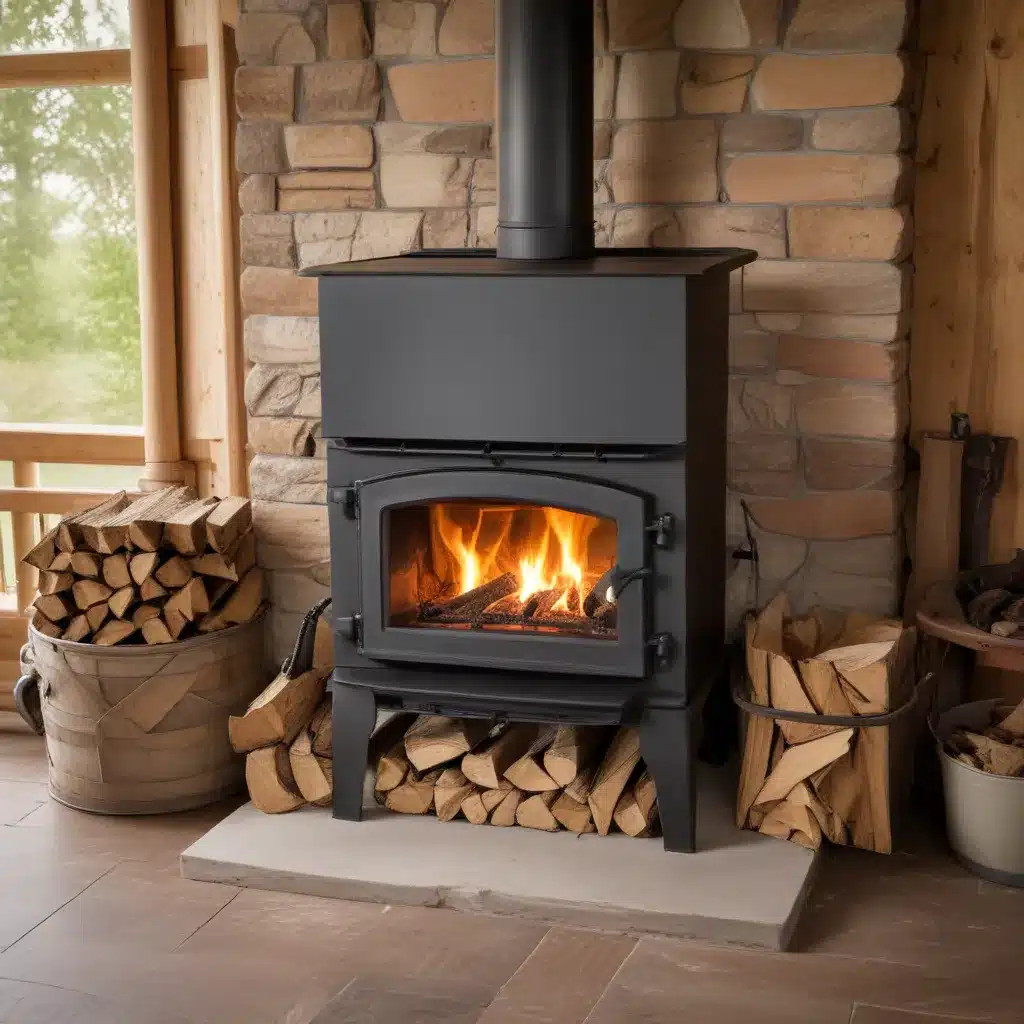
Optimizing Your Wood Stove’s Performance Through Proper Fuel Management
As a seasoned expert in the world of wood stoves and heating solutions, I’m excited to share my insights on extending the heating season through effective wood stove fuel storage and handling. Whether you’re a new wood stove owner or a seasoned pro, understanding the importance of proper fuel management can make a significant difference in the efficiency, safety, and longevity of your heating system.
Selecting the Right Firewood
The foundation of a successful wood-burning heating system lies in the quality of the fuel you use. Choosing the right type of firewood can have a profound impact on your stove’s performance, efficiency, and overall heating experience.
When it comes to selecting firewood, the key is to prioritize seasoned, dry wood. Seasoned wood, which has been properly dried for at least 6-12 months, will burn cleaner, produce more heat, and generate fewer emissions than unseasoned or “green” wood. Hardwoods, such as oak, maple, and ash, are generally preferred for their higher energy content and longer burn times compared to softwoods like pine or fir.
To ensure your firewood is adequately seasoned, use a moisture meter to check the moisture content, which should ideally be below 20%. Properly seasoned wood will produce a crisp, sharp sound when two pieces are knocked together, and the ends will have visible cracks or checks.
Effective Wood Stove Fuel Storage
Proper storage of your firewood is essential for maintaining its quality and extending the heating season. Consider the following tips for optimal wood stove fuel storage:
-
Covered Storage: Protect your firewood from the elements by storing it in a covered area, such as a shed, carport, or under a tarp. This will keep the wood dry and prevent it from reabsorbing moisture from the environment.
-
Elevated Storage: Raise your firewood off the ground, either on pallets or a raised platform. This allows for better air circulation and prevents moisture absorption from the soil.
-
Stacking Technique: Stack your firewood in a manner that promotes airflow, with the logs positioned in a criss-cross or “log cabin” pattern. This ensures efficient drying and prevents the wood from becoming compacted.
-
Seasoning Duration: Plan ahead and allow sufficient time for your firewood to properly season. As mentioned earlier, 6-12 months of seasoning is typically recommended to achieve the ideal moisture content.
-
Inventory Management: Keep track of your firewood inventory and plan your purchases accordingly. Aim to have a consistent supply of well-seasoned wood on hand to ensure you can maintain a steady heat output throughout the heating season.
Handling and Loading Techniques
Proper handling and loading techniques can significantly improve the efficiency and safety of your wood stove operation. Consider the following best practices:
-
Moisture Monitoring: Regularly check the moisture content of your firewood using a moisture meter. This will help you identify any unseasoned or damp wood that may need additional drying time before use.
-
Splitting and Size Consistency: Split your firewood into uniform pieces, ensuring they fit easily into your stove’s firebox. This promotes better airflow and more complete combustion.
-
Loading Technique: When loading your wood stove, arrange the pieces in a manner that allows for optimal airflow. Avoid packing the firebox too tightly, as this can restrict airflow and lead to incomplete combustion.
-
Staggered Loading: Load your wood stove in a staggered pattern, with each new layer of wood positioned slightly offset from the previous layer. This helps to create channels for air to circulate, enhancing the efficiency of the burn.
-
Smokeless Loading: Many modern wood stoves feature a “smokeless loading” feature, which helps to minimize smoke and ash during the reloading process. Familiarize yourself with your stove’s specific loading instructions to take advantage of this technology.
Maintaining Optimal Combustion Conditions
Ensuring optimal combustion conditions within your wood stove is crucial for maximizing efficiency, reducing emissions, and extending the heating season. Consider the following strategies:
-
Air Supply Regulation: Carefully control the air supply to your wood stove, following the manufacturer’s recommendations. Proper air regulation allows for complete combustion, resulting in higher heat output and lower particulate emissions.
-
Burn Cycle Monitoring: Observe the burn cycle of your wood stove, adjusting the air supply as needed to maintain a steady, even burn. Avoid rapid changes in the air supply, as this can lead to incomplete combustion and increased emissions.
-
Ash Removal: Regularly remove ash from the firebox to prevent it from building up and restricting airflow. Proper ash removal helps to maintain efficient combustion and extends the time between wood reloads.
-
Chimney Maintenance: Keep your wood stove’s chimney clean and well-maintained. Buildup of creosote, a byproduct of incomplete combustion, can increase the risk of chimney fires and reduce the overall efficiency of your heating system.
By following these best practices for wood stove fuel storage and handling, you can significantly extend the heating season, improve the efficiency and safety of your wood-burning system, and enjoy the benefits of a reliable, cost-effective, and sustainable heating solution.
Remember, the key to successful wood stove operation lies in the quality and management of your fuel. By investing time and effort into proper firewood selection, storage, and handling, you’ll be rewarded with a more comfortable, efficient, and environmentally-friendly heating experience throughout the colder months.
For more information on wood stoves, fireplace maintenance, and sustainable heating solutions, visit https://woodstoveheaters.com/. Our team of experts is always here to provide practical tips and in-depth insights to help you get the most out of your wood-burning heating system.


